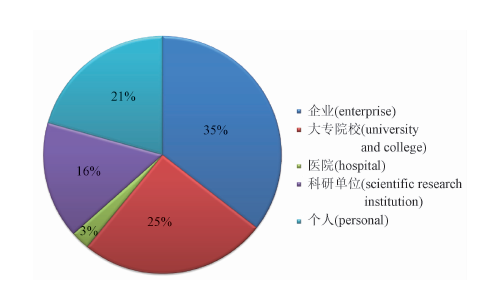
Ethnic medicine is an important part of Chinese traditional medicine, and has formed its own unique medical theoretical system. In the process of thousands of years of mutual integration, most of the ethnic groups have formed the development status of "pluralism, integration and difference". The population of ethnic minorities in China accounts for 6% of the total population, but their settlements account for 60% of the total area of the country. There are more than 8 000 kinds of ethnic medicinal materials in China, accounting for more than 70% of the total medicinal materials resources. They belong to the cultural system of more than 40 different nationalities, and have biological diversity and cultural diversity. There are more than 600 varieties of ethnic medicine, 47 of which were listed in the national basic medical insurance drug catalogue by the national labor and social security department in 2000.
In 2012, the Division of Chinese Materia Medica of National Institutes for Food and Drug Control (hereinafter referred to as "NIFDC") established the department of the ethnic medicine and set up a technical platform for the ethnic medicine in the national drug-control system which aimed to explore a new model suitable for the development of quality control of national drugs, and improve the quality inspection level of national drugs. This reflects the great importance attached to the quality research of ethnic drugs, and is of milestone significance to the development of ethnic drug testing. From 2013 to 2014, the NIFDC planned and organized a research project on ethnic medicine, which was supported by special funds from the Drug Registration Administration Department of the National Medicine Products Administration (hereinafter referred to as the "NMPA"). Since 2015, the NIFDC, as the leading unit, has jointly carried out research work with 13 national provincial (district) drug control institutes. With the support of the NMPA, three phases of project research have been carried out, the draft quality standards for 25 kinds of characteristic ethnic medicinal materials have been completed, and the research results have formed a compilation of conclusion reports of more than 1 000 000 words. Since June 2021, the project has added five strong provincial drug inspection units to carry out cooperative research, and carried out research on 32 ethnic drug varieties.
In order to strengthen the research of ethnic medicine, "Research for the Ethnic Medicine Column",including one comprehensive article and seven experimental article, has been specially set up in this issue. The paper—"Development and thinking of ethnic medicines based on patent analysis from 1994 to 2021" has analyzed the development status of ethnic medicine in China on the perspective of patent from 1994 to 2021. The results show that the ethnic medicine patent applications have experienced the embryonic stage from 1994 to 2003, the rapid development stage from 2003 to 2018 and the steady development stage from 2019 to now. It reflects that with the attention and support of the state to ethnic medicine and the efforts of scientific research institutions and scholars, some ethnic medicine work has made certain achievements. In the paper, "Identification of Polygoni Multiflori Radix, Dipsaci Radix, Morindae Officinalis Radix and Atractylodis Macrocephalae Rhizoma in Zishen Yutai pills by solid-phase extraction combined with thin layer chromatography", the standard improvement research was carried out on Zishen Yutai pills which containing 15 herbs contained in the drug standard of the Ministry of Health of the People’s Republic of China, so as to lay a foundation for the follow-up study of ethnic medicine. In the paper, "Visualization analysis of spatial distribution of chemical compositions in Morindae Officinalis Radix processed product by matrix-assisted laser desorption ionization mass spectrometry imaging", the matrix-assisted laser desorption ionization mass spectrometry imaging (MALDI-MSI) has used to acquire the data of spatial distribution of iridoid and saccharous in Morindae Officinalis Radix and the contents of iridoid in the samples were determined by UPLC which provides a new way of thinking for the Chinese medicine processing. In the paper, "Research on improvement of quality standard of the Guangxi ethnic herb Onychii Herba", the quality standard and quality control level of Onychium japonicum (Thunb.) Kze. was improved. In the other four articles, "Comparison and optimization extraction of genomic DNA from Tibetan patent medicine Shiliu Jianwei powder", "Based on specific primer for the HRM identification method study of Tibetan patent medicine Shiliu Jianwei powder". "Genomic DNA extraction conditions optimization of Arnebiae Radix based on response surface methodology" and "RFLP-HRM identification method of Arnebiae Radix based on DNA barcoding and high resolution melting", DNA identification technology was used to optimize the extraction of genomic DNA from Arnebiae Radix and Shiliu Jianwei powder, so as to provide data support for the root cause of ethnic medicine.
Through the above research column, this issue hopes to provide readers with new ideas and new methods for the research of ethnic medicine, and expand the depth and breadth of ethnic medicine research, so as to promote the innovative development of ethnic medicine. And then to explore appropriate new models of ethnic medicine research, and jointly promote the development of basic research in the field of ethnic medicine.